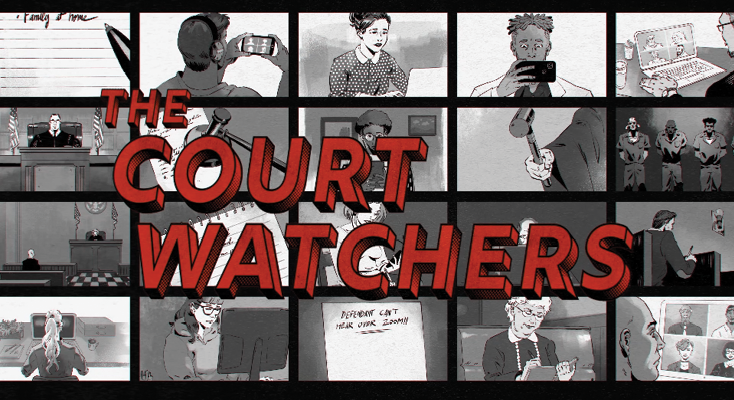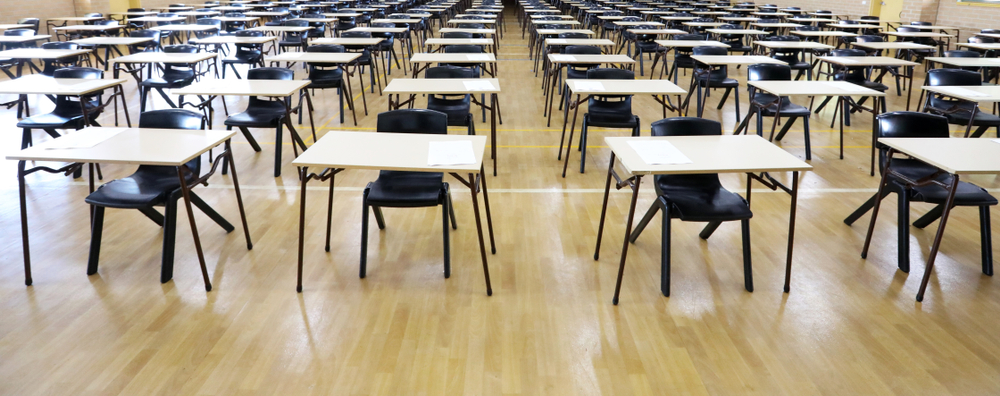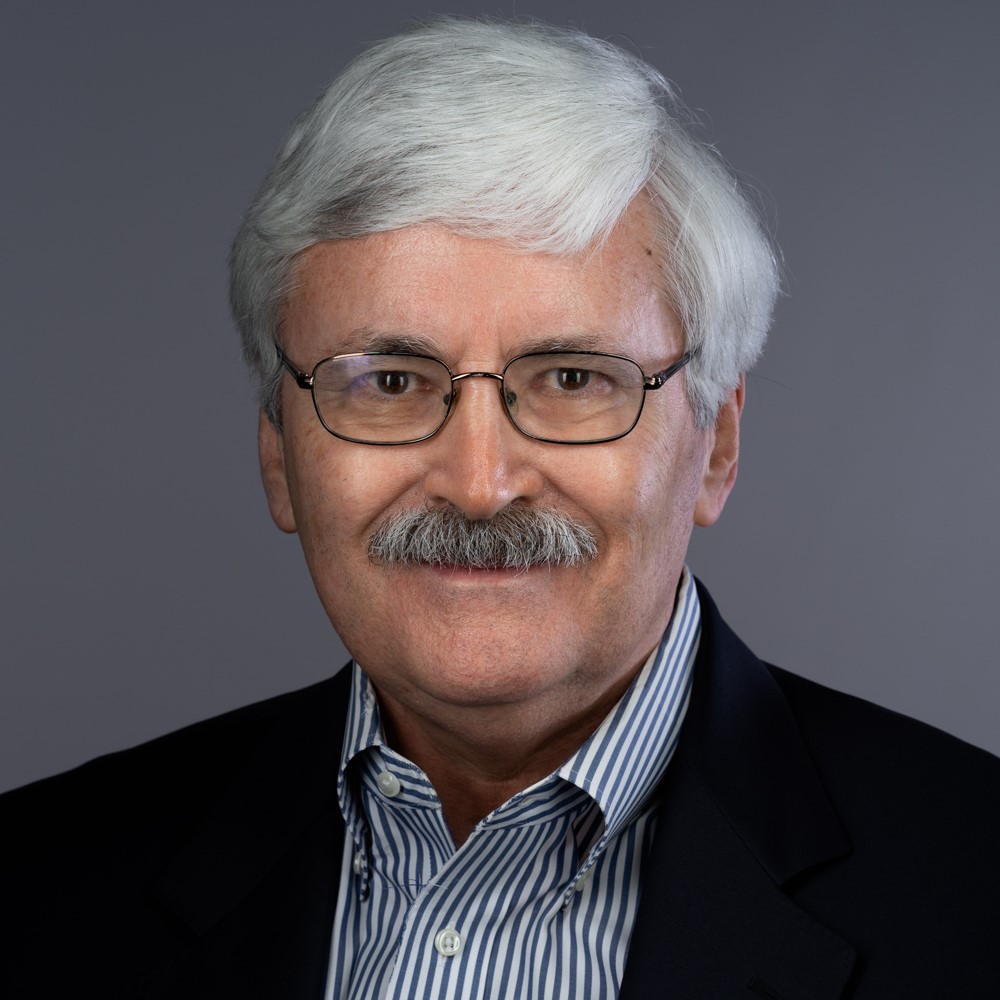ABA entities help amplify the 'court watch' movement

Photo courtesy of Zealous
The ABA is ramping up efforts to support a growing movement of court watchers. These are members of the public who observe bail hearings and other court proceedings and document the actions of judges and lawyers.
In the past, the Section of Civil Rights and Social Justice and Standing Committee on Legal Aid and Indigent Defense conducted their own court-watching initiatives to compare existing practices to constitutional standards and ABA policy.
For example, in 2016, the Section of Civil Rights and Social Justice asked volunteer lawyers to observe judges in misdemeanor courts in Nashville, Tennessee. These volunteers found judges often failed to inform defendants of their right to counsel, a departure from not only state and federal law but also the ABA Criminal Justice Standards.
From 2018 to 2022, members of the Standing Committee on Legal Aid and Indigent Defense observed misdemeanor courts in New Mexico to better understand their administration of fines and fees. They found these courts regularly fell short of the ABA Ten Guidelines on Court Fines and Fees by not waiving or reducing fines and fees based on a defendant’s ability to pay.
The ABA’s efforts are not limited to the United States. The Center for Human Rights has been involved in international trial monitoring since 2011. For the past four years, it has partnered with the Clooney Foundation for Justice to run TrialWatch, an initiative that has monitored criminal trials in more than 40 countries.
The ABA hopes to take its work a step further and serve as a comprehensive resource for court watchers, says Malia Brink, a member of the Section of Civil Rights and Social Justice Council. It has created an online court watching hub that includes how-to materials and criminal court observation forms and manuals. It also hosted a virtual program this summer to address what advocates want to accomplish and how lawyers can help them.
“We want to provide a gathering place for a discussion about the movement,” says Brink, a senior policy attorney at the Deason Criminal Justice Reform Center at Southern Methodist University Dedman School of Law who previously served as counsel for indigent defense to the Standing Committee on Legal Aid and Indigent Defense. “I think one of the best aspects of court watching is that it’s communities and community members—not necessarily lawyers—who are looking at the courts. That’s an important outside perspective.
“And so, in that community-led movement, what can lawyers provide that is useful?”
Call to action
Singer-songwriter Fiona Apple is one community member who is calling attention to court watching.
For the past two years, she has volunteered with Courtwatch PG, the largest virtual court watch program in the country, to observe virtual legal proceedings in Prince George’s County, Maryland, from her home in Los Angeles.
Apple has also joined other advocates who aim to inspire more people to get involved. As part of their launch of the National Courtwatch Network in February, they released The Court Watchers, a short animated film narrated by Apple, actor Jesse Williams and Courtwatch PG director Carmen Johnson.
The goal of the network and its website, courtwatch.org, is to connect individual court watch programs such as Courtwatch PG, Baltimore Courtwatch and Court Watch NOLA in New Orleans to one another, so they can collaborate and share resources. It also provides information on how people can start their own court watch programs.
Protecting “the Sixth Amendment right to a public trial is one of—if not the most—direct, powerful actions that everyday people can take if they are interested in justice, accountability, transparency and the proper functioning of the court system,” says Scott Hechinger, founder and executive director of advocacy organization Zealous, who helped launch the network. “But we know this important constitutional right isn’t being fully realized for a range of reasons, and we know court watching is not really at the top of people’s list of racial and social justice imperatives. So how could we make that issue and this intervention engaging and accessible? That’s how this evolved.”
Hechinger, who worked as a public defender in New York City for nearly a decade before starting Zealous in 2019, remembers the first time he saw someone wearing a Court Watch NYC T-shirt in the courtroom.
He learned that a coalition of volunteers, most of whom have no prior legal experience, had trained to sit in on court proceedings and document what happens in each case. They share their notes in reports, on social media and in letters meant to hold attorneys, judges, police and jail staff accountable for any problems.
“Court watch is unique because these are not lawyers,” Hechinger says. “They are high school students, they are retired librarians and everything in between who are trained in the language of that particular court.”
Amid the COVID-19 pandemic, Hechinger heard about problems controlling the spread of the virus at the Prince George’s County Jail. He brought together a group that included Johnson—who was then Courtwatch PG’s sole court watcher—to brainstorm how they could bring awareness to the situation.
They launched a campaign called Gasping for Justice to amplify sworn statements that were collected from prisoners inside the jail. Apple and Williams, as well as other singers and actors, academics, advocates and public defenders, read these statements in filmed segments that were shared on social media. Hechinger says the campaign went viral, and millions of people heard these previously unknown stories.
“The call to action among sharing it was to sign up for court watch virtually in Prince George’s County,” Hechinger says. “Within four days, Carmen, this lone court watcher, was joined by over 200 volunteers.”
‘A national platform’
In her work with Courtwatch PG, Johnson has observed more than 5,600 bail hearings and other court proceedings, including waiver hearings for juveniles. She also has trained more than 400 volunteers and 100 law students to court-watch.
“I don’t want what happened to me to happen to anyone else,” says Johnson, who served three years in prison after being convicted of conspiracy, wire fraud and making a false statement on a loan application in a case arising from two residential mortgage fraud schemes. She maintains that she was wrongfully convicted. “I had no idea this ‘injustice’ system works the way it works, and we get a lot of people who for the first couple of months are just shocked at the things they are hearing that are happening in the courtroom.”
In 2020, Johnson, a paralegal and ABA member, began working with students in Howard University School of Law’s Movement Lawyering Clinic, which advocates for clients and communities involved in civil and human rights campaigns. Since then, students have observed bail hearings in Prince George’s County and documented wrongdoing, including in a report they published online and distributed to the Maryland General Assembly in March.
Howard students saw judges dismiss defendants’ medical and mental health needs, according to the report. They also identified judges who issued unnecessarily harsh rulings to juveniles, set unaffordable bonds in violation of Maryland state law and continued with hearings despite poor audio quality.
Because some courts have limited remote hearings in recent months, Howard students have also helped advocate for Maryland House of Delegates and Senate bills that would require each court in the state to provide remote audio-visual access to all public proceedings. The proposals died in committee.
“The ABA itself is supportive of court watch and transparency and allowing people to observe what’s happening in these courtrooms that we’re paying for, and ultimately, we are the owners of,” says Justin Hansford, a professor at Howard University School of Law who leads the Movement Lawyering Clinic. “In our post-COVID world, we realized we have access to this technology. We can bring Zoom hearings into the homes of not only general court watchers but also family members and friends and other people who may want to support their loved ones.”
Hansford, a member of the Section of Civil Rights and Social Justice, helped organize the ABA program on court watching because it provides an opportunity “to put the issue on a national platform.” He hopes to highlight his students’ experiences as well as discuss the benefits of court watching for all law students.
Another goal is to recruit more ABA members for court watch and expand programs to other law school clinics around the country, Hansford adds.
“Any civil rights clinic or social justice clinic can do this,” Hansford says. “It’s a great education for the students and gets them into the courtroom so they can become familiar with what’s happening there. They are able to contribute to ensuring the system is working the way it’s supposed to work for people.”
This story was originally published in the August-September 2023 issue of the ABA Journal under the headline: “Outside Perspectives: ABA entities help amplify the ‘court watch’ movement.”



